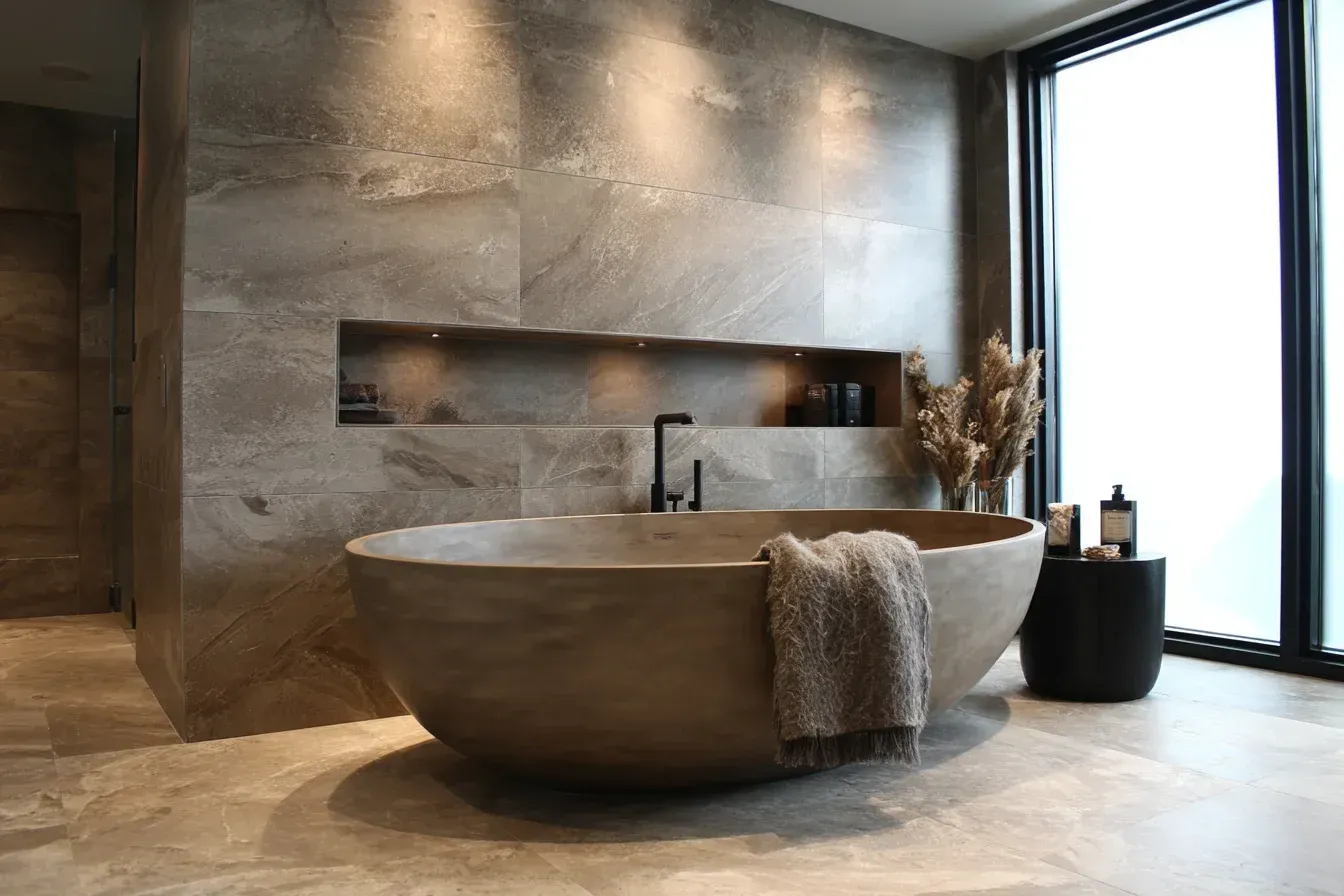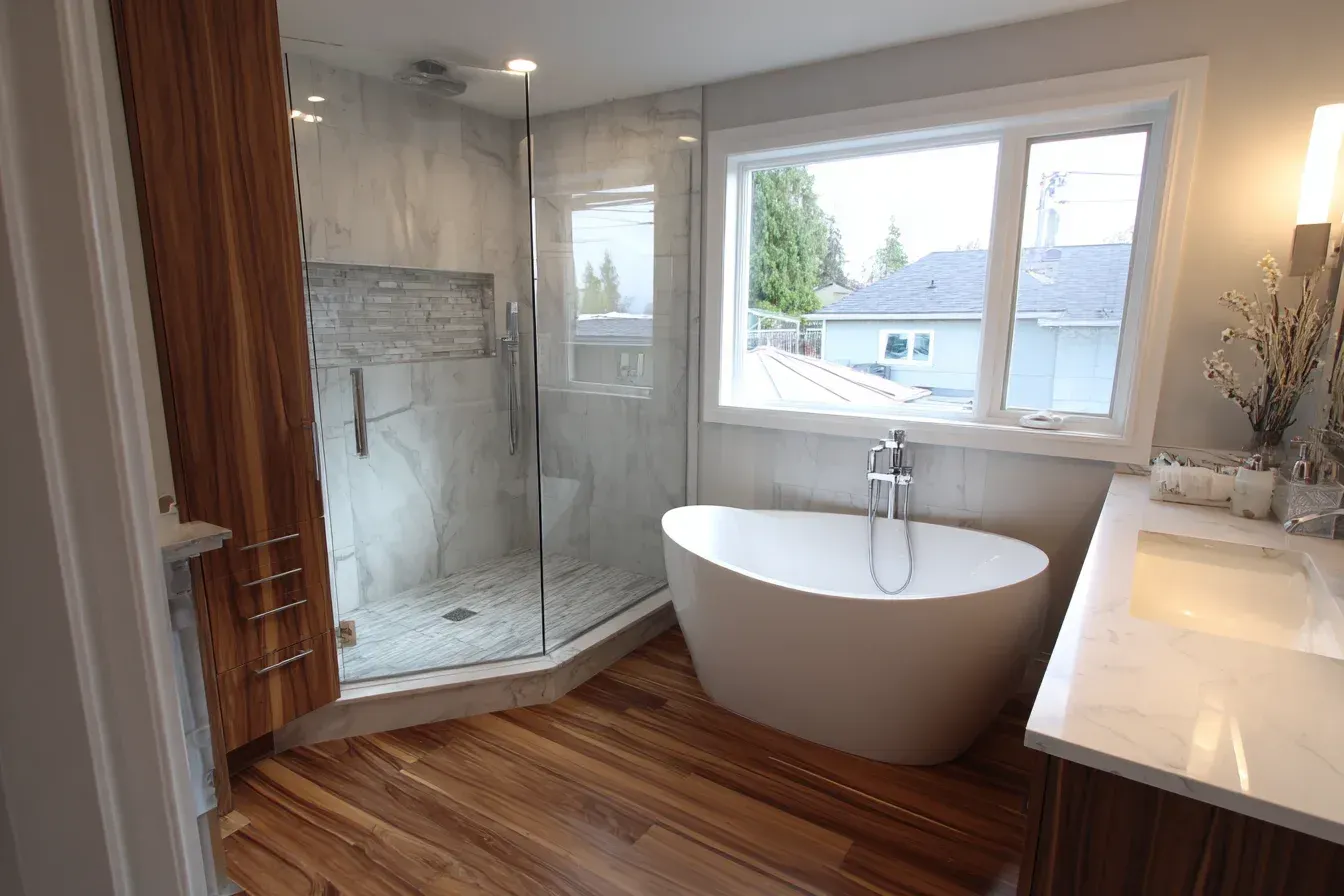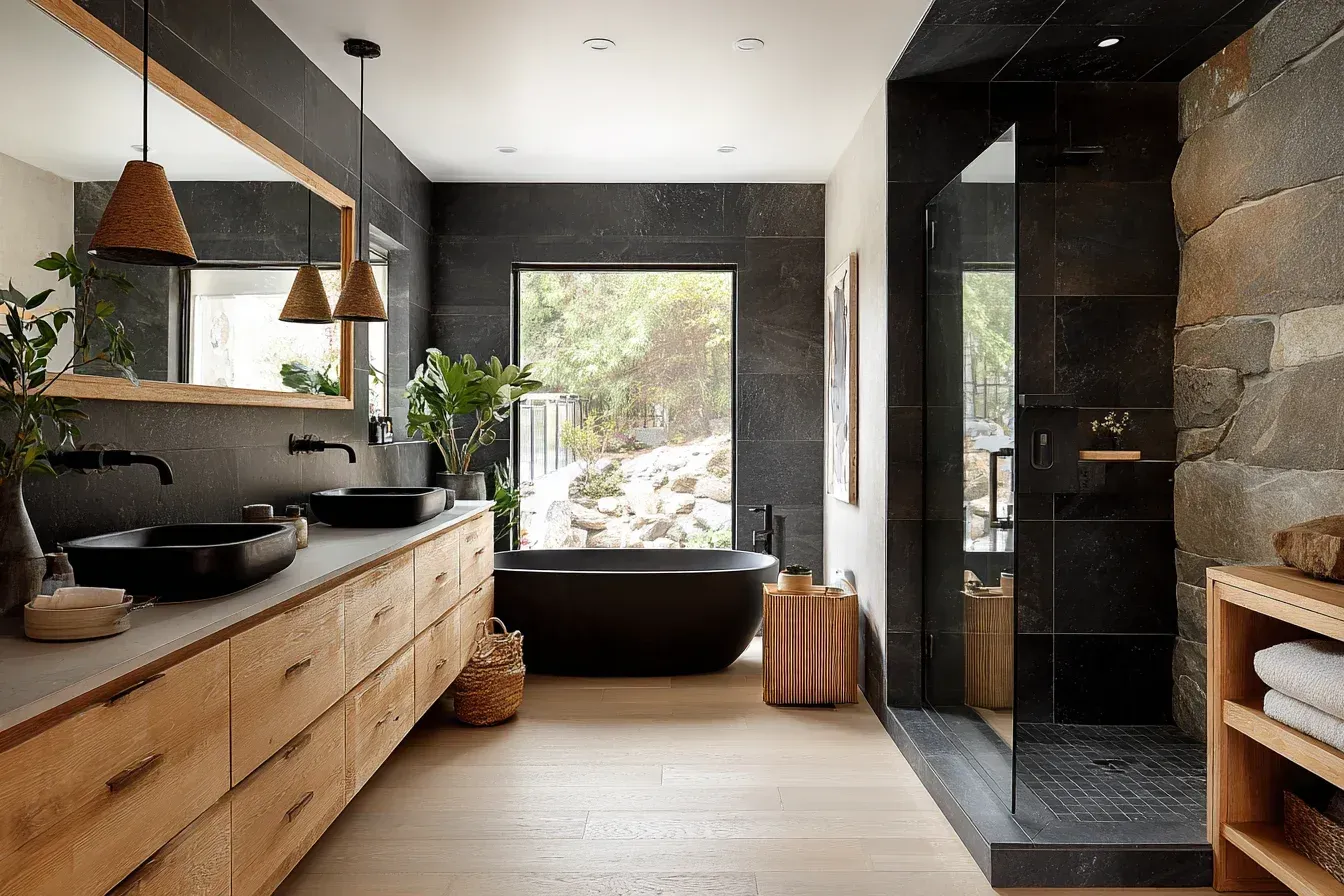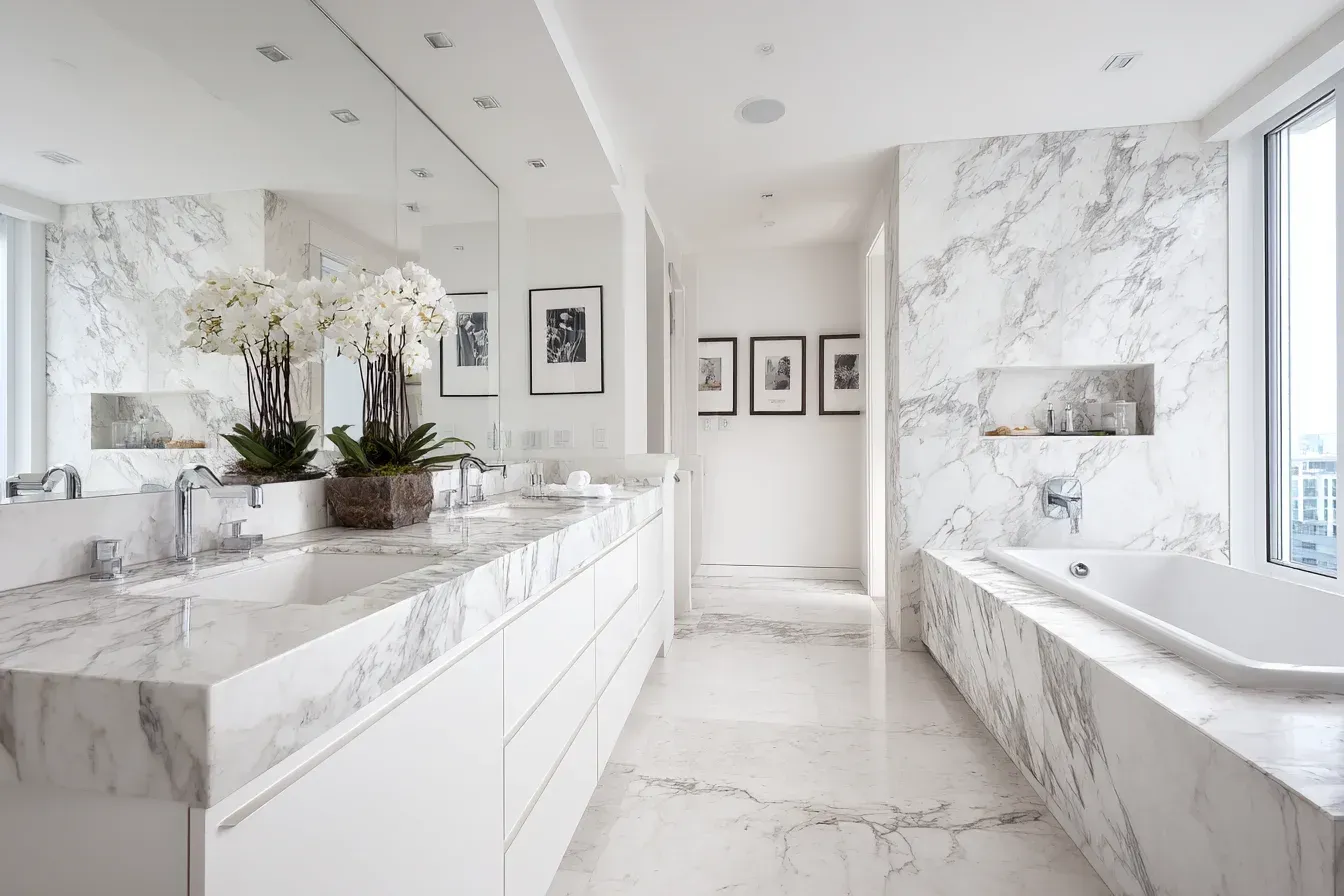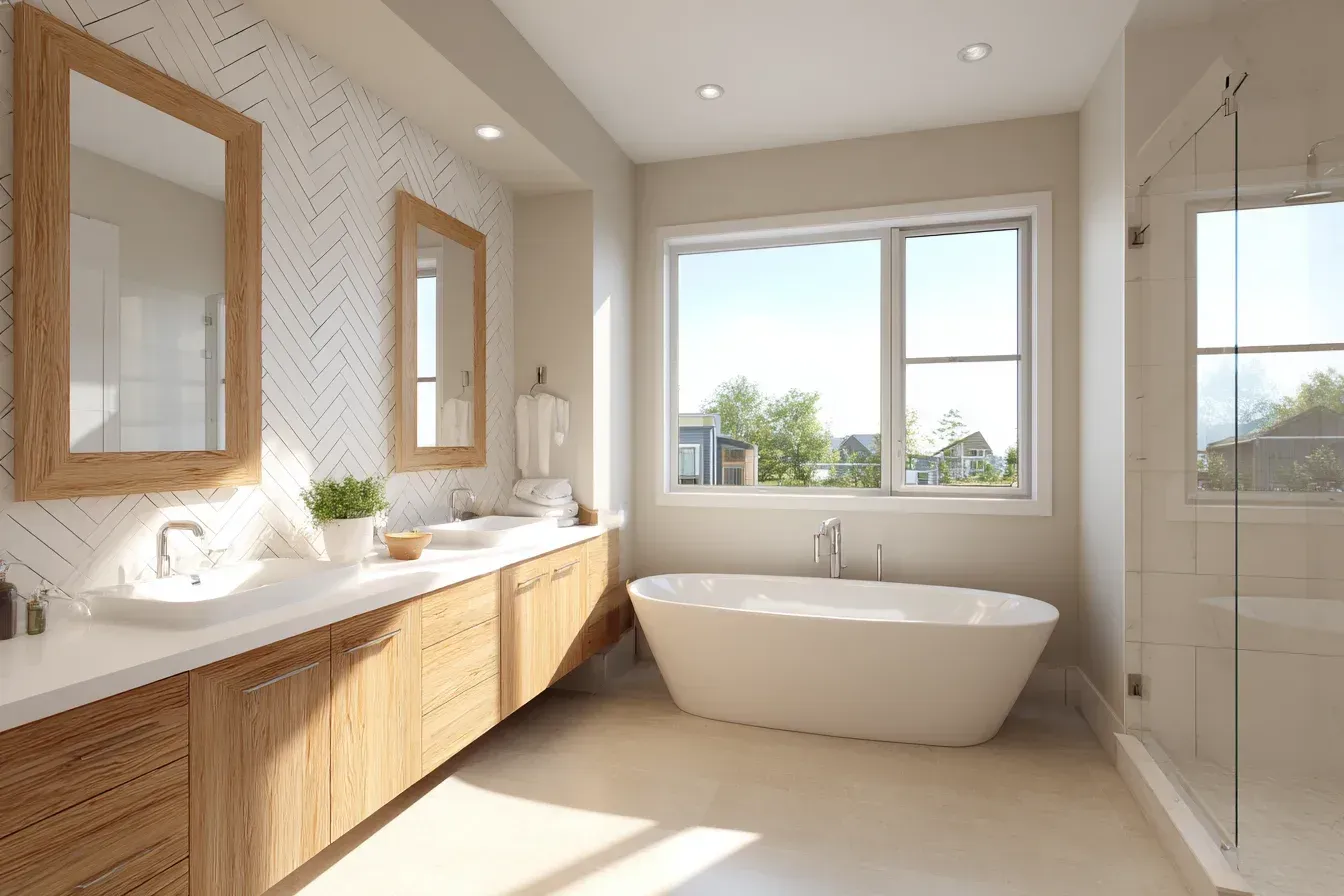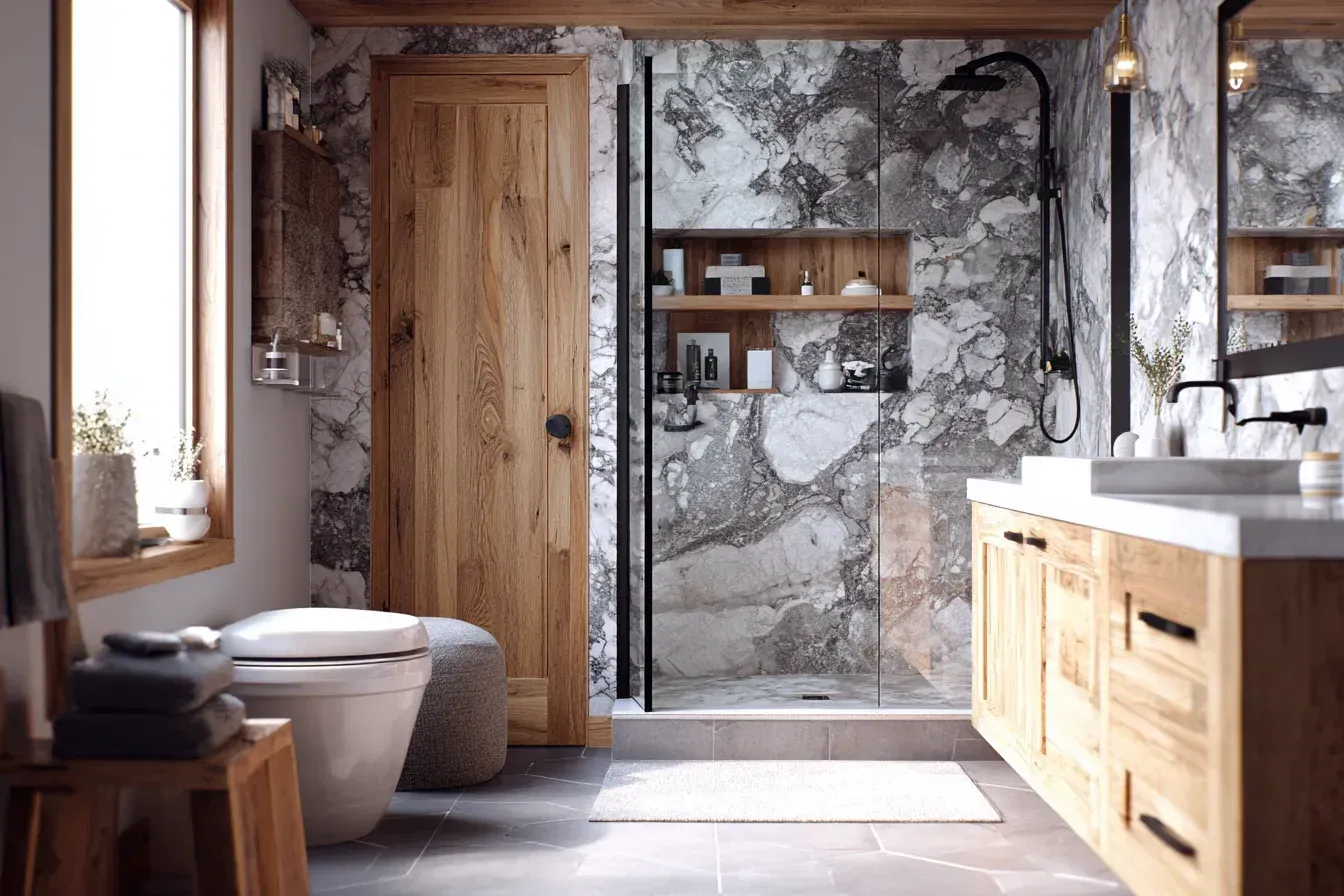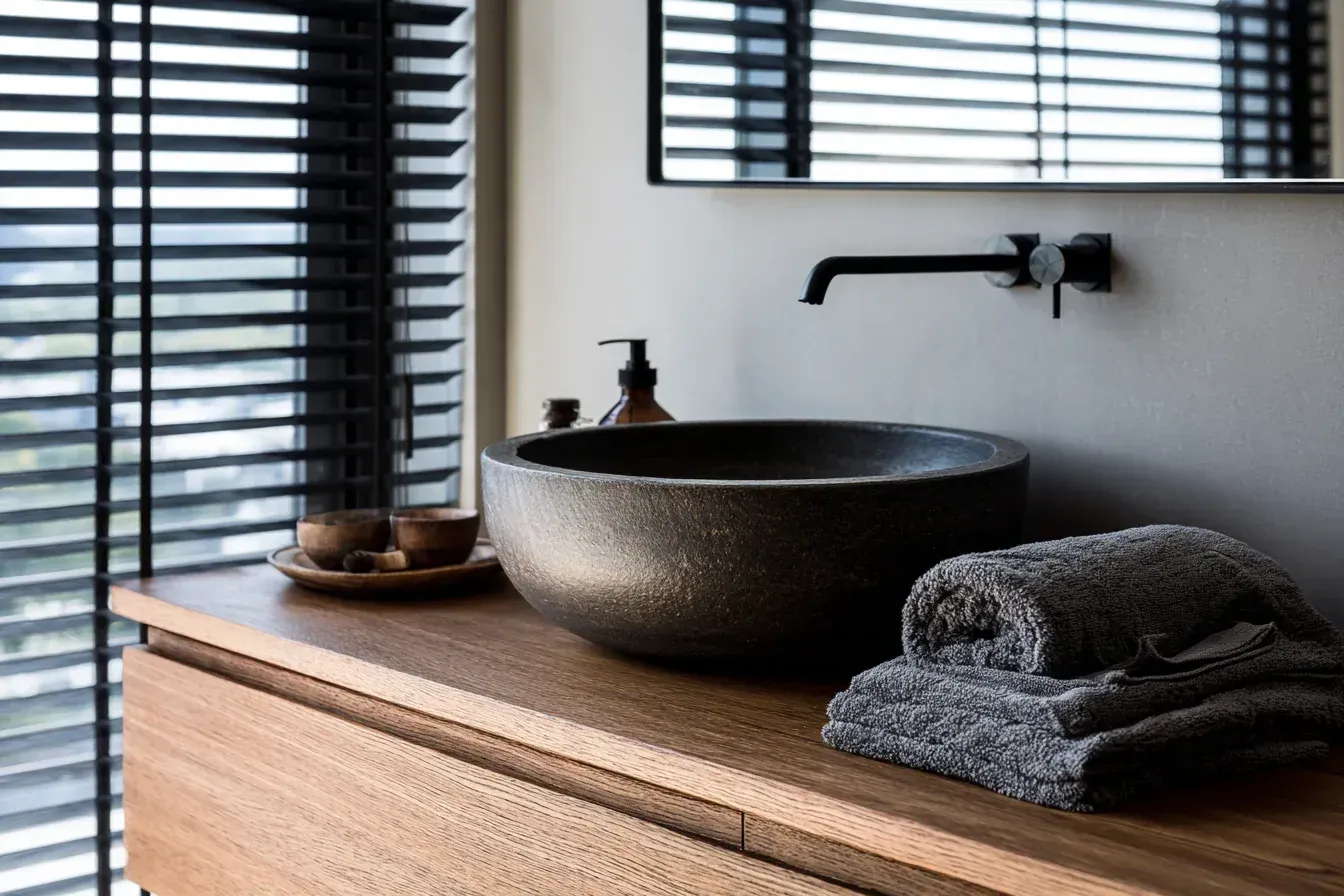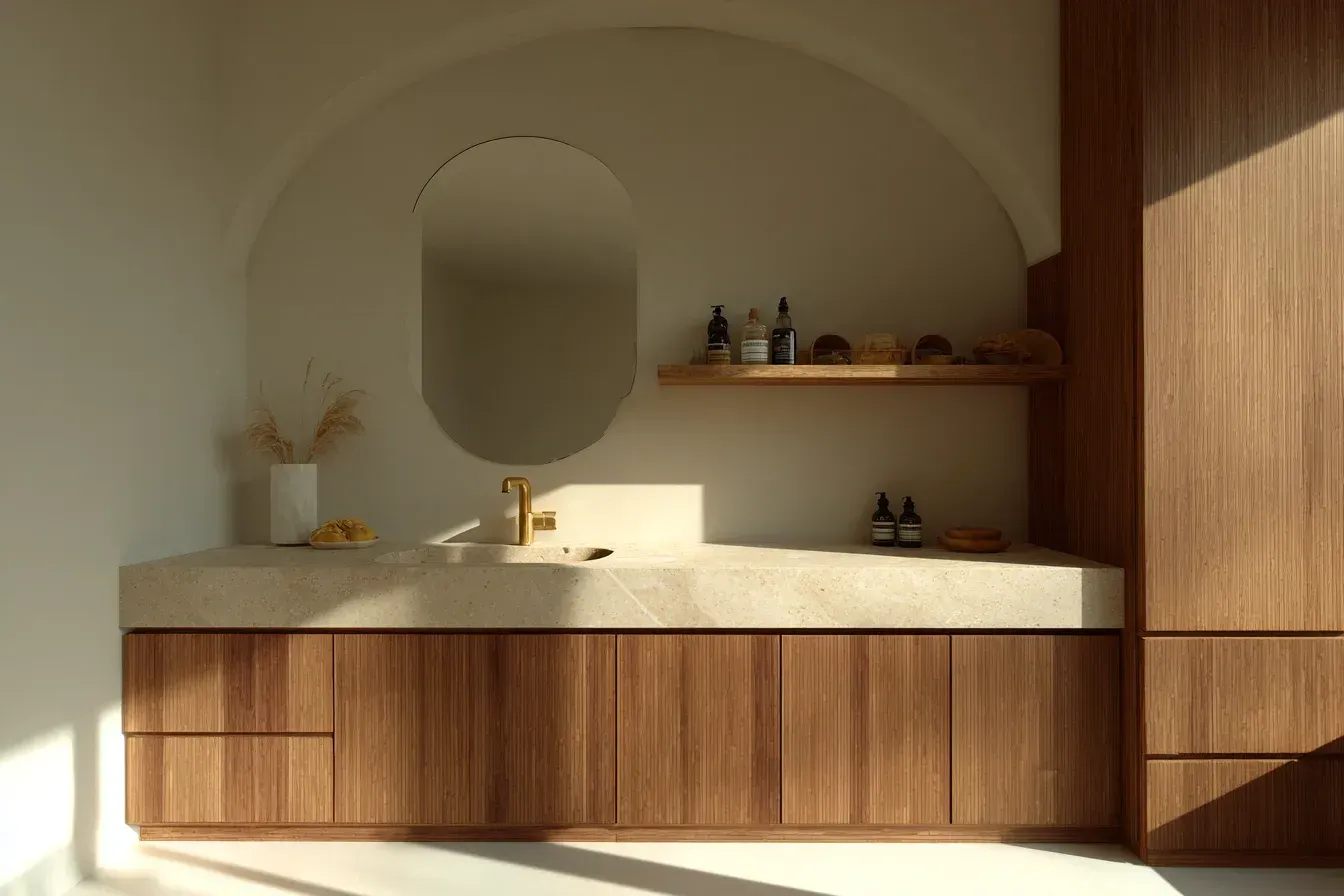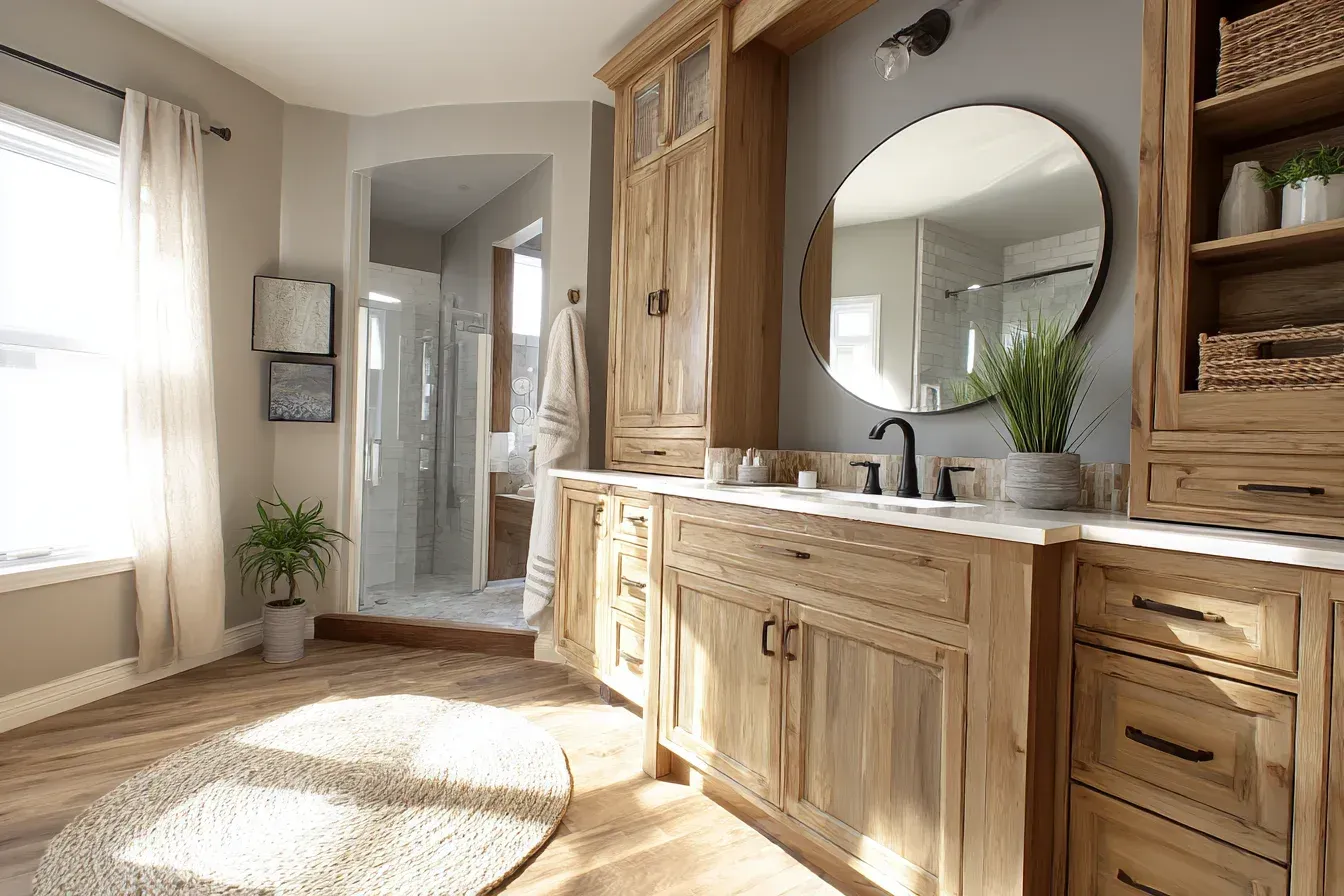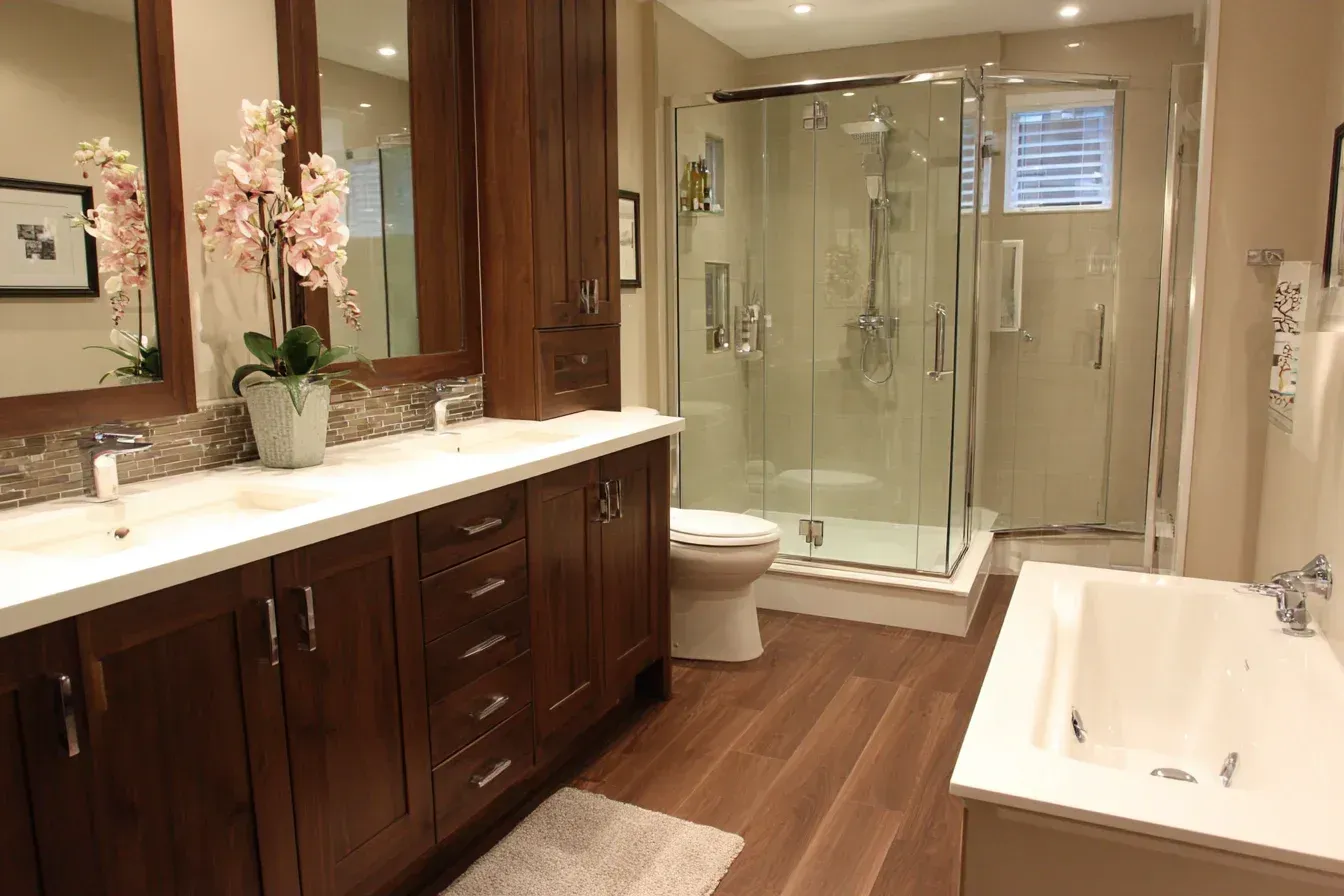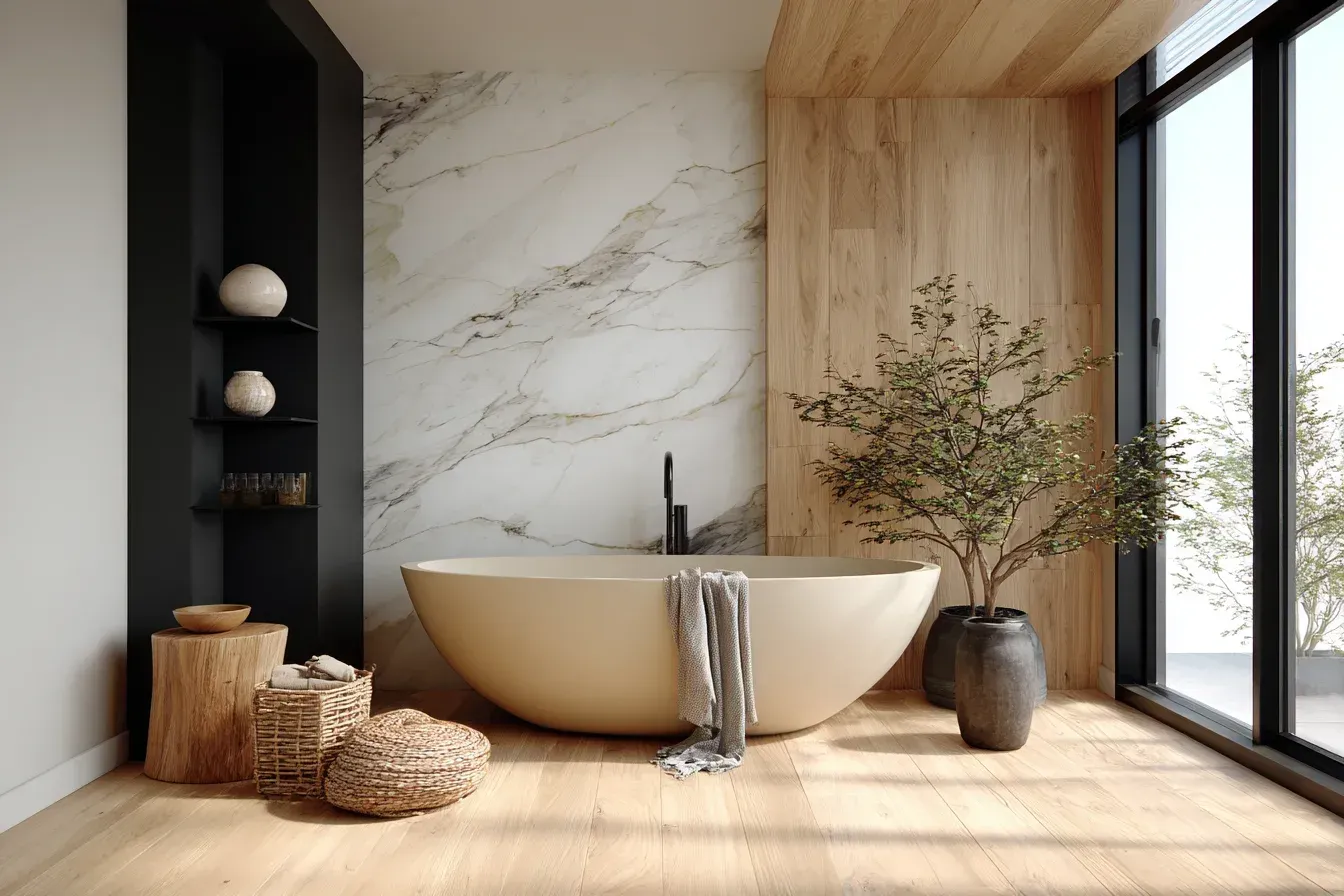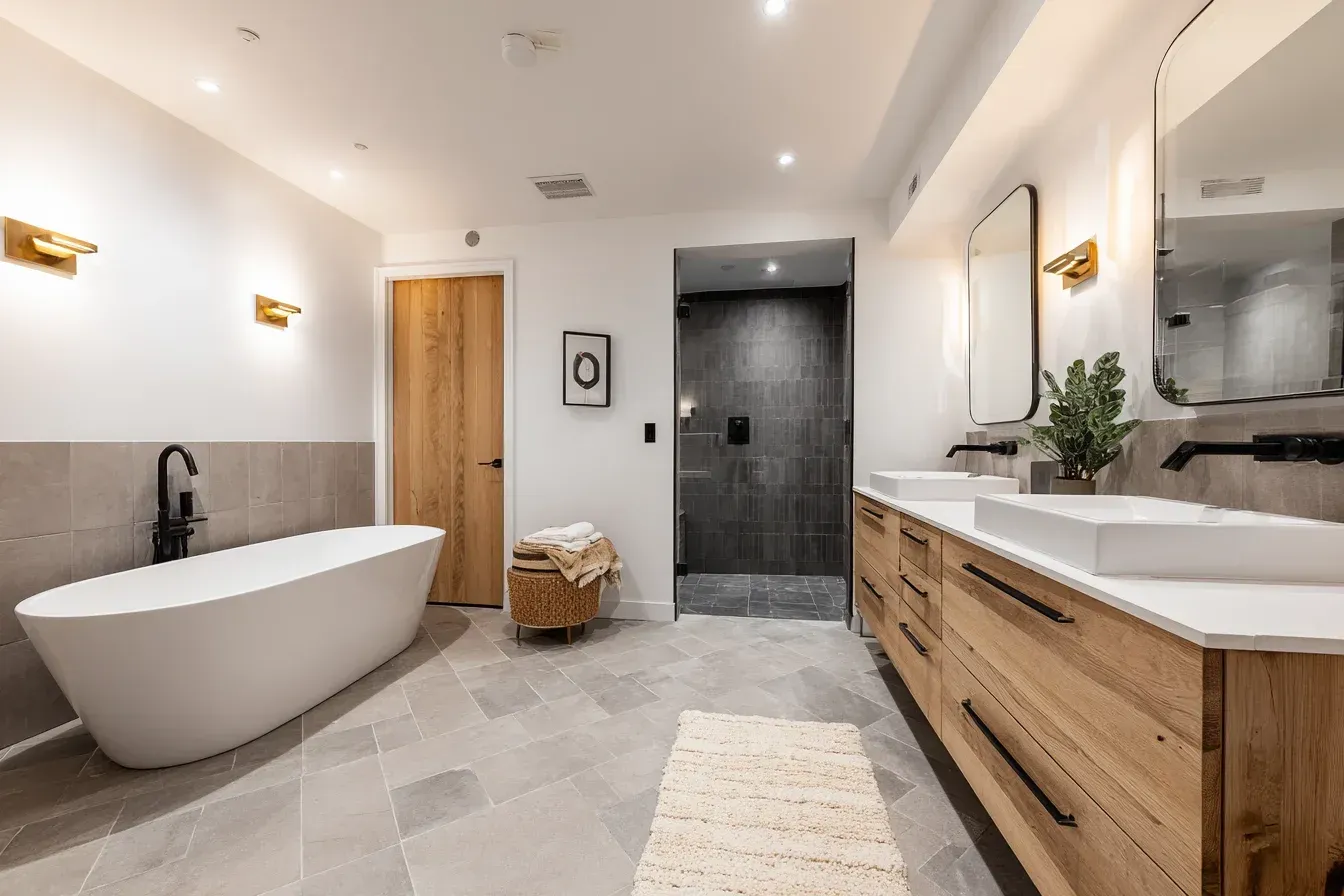Eco-Friendly Bathroom Renovation Ideas for a Sustainable Home
Sustainable bathroom renovations are becoming increasingly popular as homeowners look for ways to reduce energy use, conserve water, improve indoor air quality, and create healthier, more efficient homes.
An eco-friendly bathroom doesn’t just benefit the planet—it also lowers utility bills, increases home value, and creates a cleaner, healthier environment for your family.
Whether you’re planning a full remodel or looking for small upgrades with big impact, this guide covers the most effective eco-friendly bathroom renovation ideas.
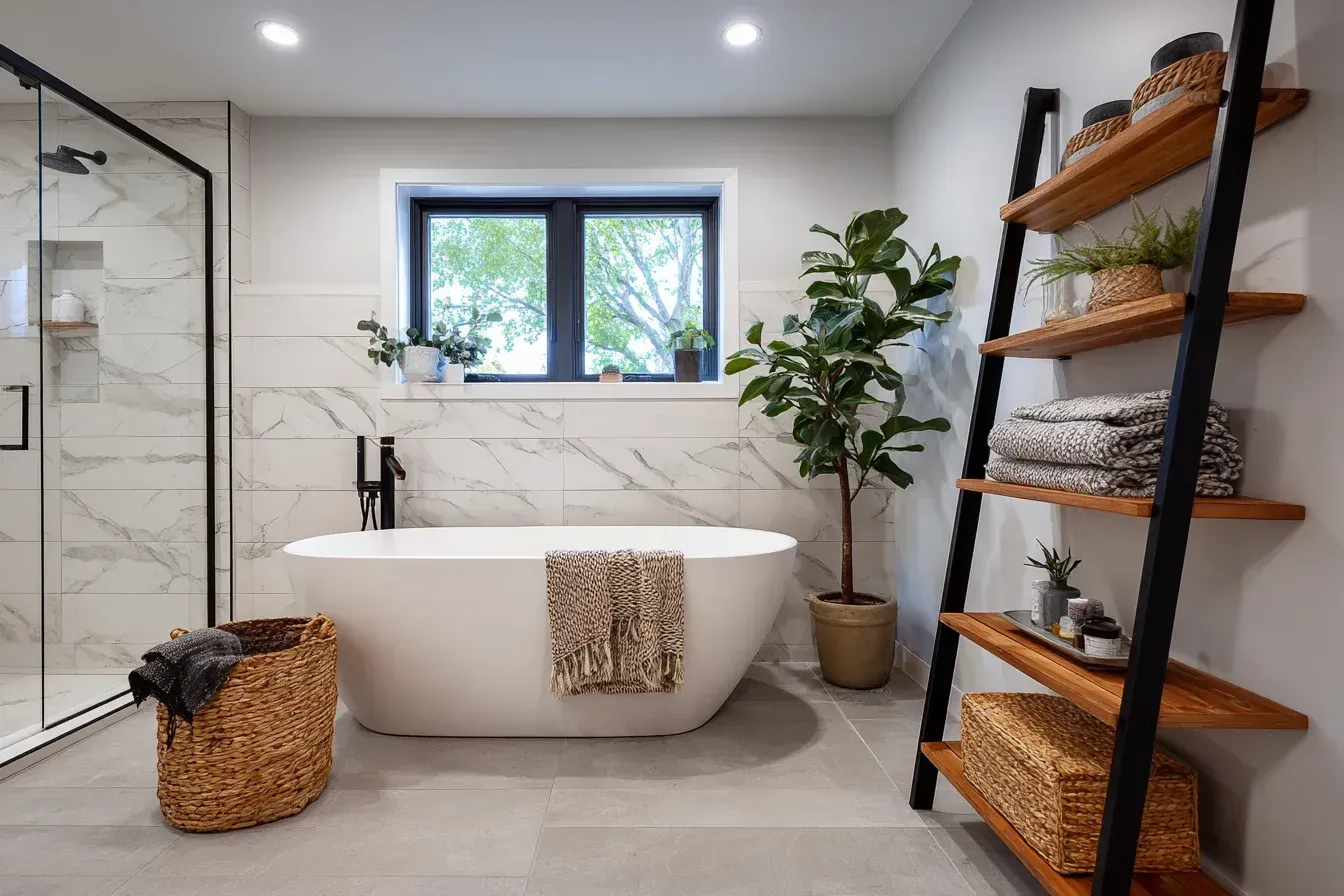
Why Eco-Friendly Bathrooms Matter
Bathroom renovations offer some of the highest opportunities for sustainability because they involve:
- Heavy water use
- Significant energy consumption
- High moisture levels
- Frequent chemical exposure
- Rapid wear on fixtures and finishes
Eco-friendly design makes bathrooms cleaner, healthier, and more efficient for long-term living.
1. Install Water-Efficient Fixtures and Faucets
Water conservation is one of the most important aspects of sustainable bathroom design.
Eco-friendly fixture options
- Low-flow showerheads
- Water-saving faucets
- Dual-flush or high-efficiency toilets (HETs)
- Smart shower systems
Benefits
- Reduce water usage by 30–60%
- Lower utility bills
- Prevent unnecessary waste
Look for WaterSense-certified products for maximum efficiency.
2. Choose Sustainable, Long-Lasting Materials
Eco-friendly bathrooms prioritize durability and responsible sourcing.
Best sustainable material choices
- Porcelain tile — extremely durable, low maintenance
- Recycled glass tile — stylish and sustainable
- Bamboo — fast-growing, renewable option for vanities or shelves
- Reclaimed wood — adds warmth and character
- Quartz countertops — durable and low-VOC
- Cork flooring (outside wet areas) — soft, renewable, and sustainable
Materials to avoid
- Vinyl with phthalates
- Cheap laminate that separates in moisture
- Untreated wood in shower areas
- Toxic or solvent-heavy finishes
Sustainable materials last longer and reduce long-term waste.
3. Use Low-VOC Paints, Adhesives, and Sealants
Traditional paints and adhesives contain volatile organic compounds (VOCs) that can pollute indoor air.
Eco-friendly alternatives
- Low-VOC or zero-VOC paints
- Water-based adhesives
- Natural sealants
- Eco-certified products (GreenGuard, Green Seal)
Benefits
- Better indoor air quality
- Less off-gassing
- Healthier environment for kids, pets, and those with sensitivities
4. Improve Ventilation for Healthier Air
A sustainable bathroom is a healthy bathroom.
Smart ventilation ideas
- Energy-efficient exhaust fans
- Humidity-sensing fans
- Proper ducting to the outdoors
- HEPA filtration add-ons
Why this matters
Proper ventilation prevents mold, reduces humidity, protects materials, and maintains air quality.

5. Install LED Lighting and Smart Controls
Lighting is a simple but impactful eco-friendly upgrade.
Eco-friendly lighting options
- LED bulbs (use up to 80% less energy)
- Motion-sensor lights
- Smart dimmers
- Natural-light-enhancing designs (mirrors, windows)
Benefits
- Longer bulb lifespan
- Lower energy usage
- Better task lighting
Lighting is one of the easiest areas to make eco-friendly.
6. Opt for a High-Efficiency Toilet
Toilets account for nearly 30% of household water use.
Eco-friendly toilet features
- Dual-flush options (full flush vs. reduced flush)
- Low-flow systems
- Pressure-assisted flushing
- Smart toilets
Savings
You can reduce water usage by 20–60% per toilet.
7. Incorporate a Walk-In Shower Instead of a Bathtub
Walk-in showers can be more water-efficient than tubs—especially with low-flow showerheads.
Benefits
- Lower water usage per session
- Easier to clean
- More accessible
- Modern and spa-like design
Considerations
If baths are essential, choose a smaller soaking tub rather than a large standard tub.
8. Use Sustainable Flooring Options
Bathroom flooring should be both eco-friendly and moisture-resistant.
Sustainable flooring materials
- Porcelain tile (most durable + environmentally friendly)
- Natural stone (if responsibly sourced)
- Recycled tile
- Bamboo, cork, or engineered wood for low-moisture areas
Avoid
- Standard vinyl (contains chemicals)
- Cheap laminate (not moisture-resistant)
- High-quality flooring reduces maintenance and replacement costs.
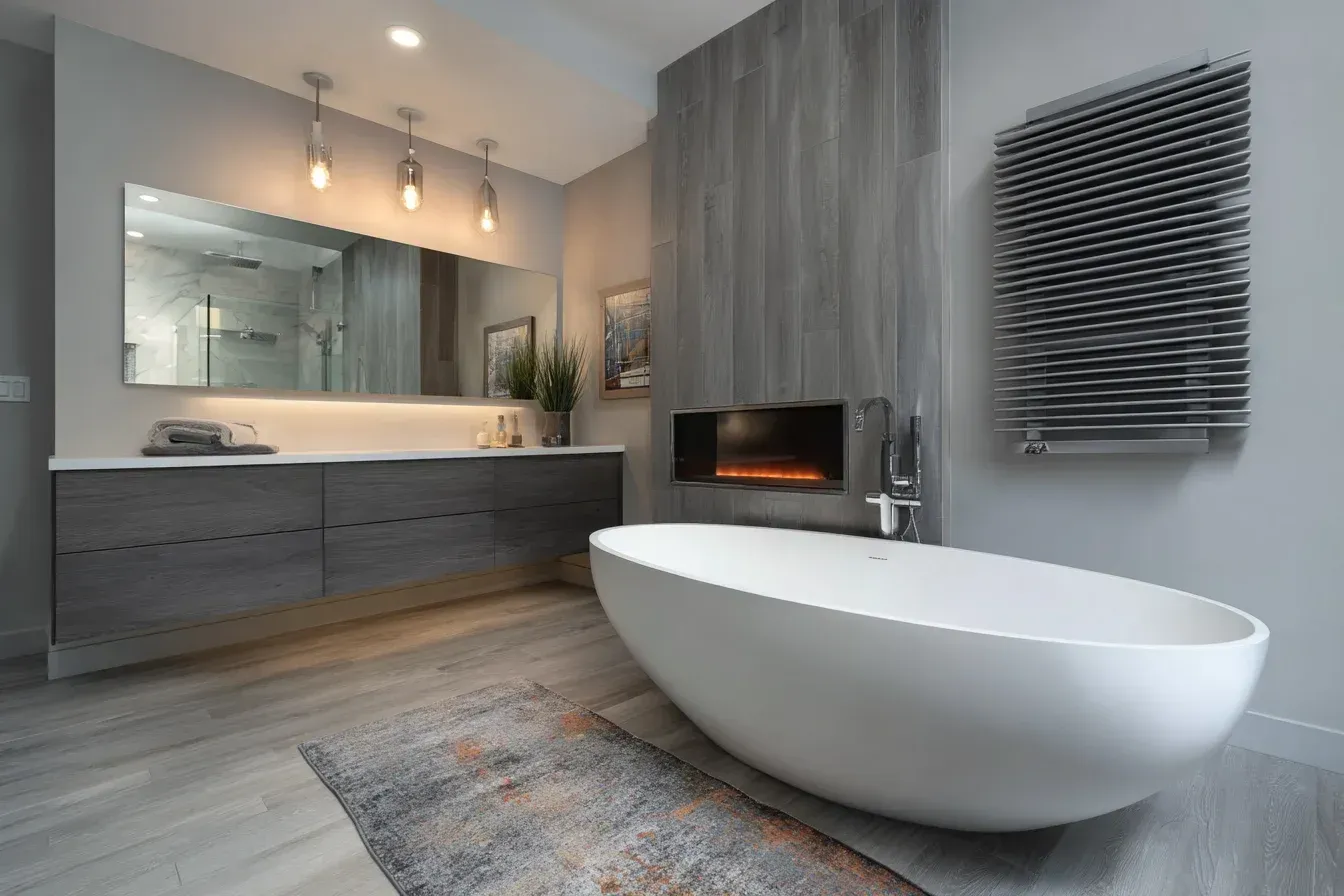
9. Add Natural Light to Reduce Electricity Use
More natural light = less artificial lighting.
Ideas to increase natural light
- Larger or higher windows
- Solar tubes
- Frosted glass for privacy
- Light tunnels
- Strategically placed mirrors
Benefits
- Saves energy
- Makes the bathroom feel larger
- Reduces mold by lowering humidity
10. Choose Eco-Friendly Shower Systems and Fixtures
Modern shower systems offer smarter water usage.
Look for features like
- Water recirculation
- Temperature control
- Timed shut-off
- Reduced flow rates
- Smart presets
Smart systems improve both comfort and sustainability.
11. Add Plants for Natural Air Purification
Plants improve air quality and add spa-like freshness.
Best bathroom-friendly plants
- Aloe vera
- Snake plant
- Spider plant
- Pothos
- Peace lily
- Bamboo
Plants thrive in humidity and help purify indoor air.
12. Use Recycled or Upcycled Vanities and Accessories
Eco-friendly bathroom design isn’t just about new materials.
Ideas
- Repurposed dressers as vanities
- Upcycled wood shelving
- Reclaimed mirrors
- Vintage décor
Using reclaimed materials reduces waste and adds character.
13. Install Energy-Efficient Water Heaters
Your water heater plays a major role in energy consumption.
Eco-friendly water heater options
- Tankless (on-demand) systems
- Heat pump water heaters
- Solar-assisted heating
- High-efficiency gas systems
Benefits
- Reduce energy bills
- Provide consistent hot water
- Lower environmental footprint
14. Opt for Frameless Glass Instead of Curtains
Glass is more durable and reduces mold growth compared to shower curtains.
Sustainability benefits
- Longer lifespan
- Easier to clean
- Improves airflow
- Reduces plastic waste
Choose tempered glass for safety and longevity.
15. Seal and Insulate Properly to Reduce Energy Loss
Moisture and heat escape through poor insulation.
Eco-friendly improvements
- Insulate around plumbing
- Seal gaps around windows
- Install insulated subflooring
- Use proper sealing around tubs and showers
Better insulation improves both energy efficiency and comfort.
Smart Budget Tips for Eco-Friendly Renovations
Eco-friendly doesn’t have to mean expensive.
Ways to save
- Prioritize water-saving fixtures first
- Use recycled or upcycled materials
- Choose porcelain tile instead of marble
- Install efficient LED lighting
- Refinish instead of replace
- Paint instead of re-tile whole walls
A sustainable bathroom can fit any budget.
Final Thoughts: Eco-Friendly Bathrooms Benefit You and the Planet
An eco-friendly bathroom renovation saves water, reduces energy consumption, improves indoor air quality, and enhances the longevity of your space.
By choosing sustainable materials, water-efficient fixtures, smart technology, and natural elements, you can transform your bathroom into a beautiful, functional, and environmentally responsible sanctuary.
Small steps create big impact—and every eco-friendly choice builds a healthier home and a better future.
Recent Posts

